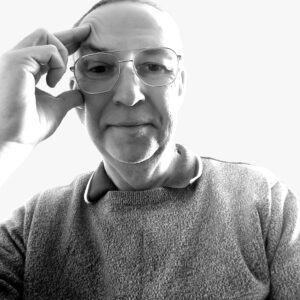How do you feel about being a published fiction author? Do you consider yourself an historical novelist?
Obviously, it’s a pleasure to be published, it’s why we write books to reach a wide audience. A lot of work goes into a novel and to see it in print and on the shelf for sale is an achievement, people spending their money to buy it and hopefully enjoying it an honour.
Although historical fiction is my preferred format for novels, I also write general fiction, as well as nonfiction titles. I create what inspires me, I have several projects on the go at any time, which one is worked on today depends on my mood. I find it helps not to be tied to one genre, after finishing a novel I find non-fiction cleansing.
The story is told through the eyes of newly qualified flight engineer John Jenkins. How did he and the times you write about in this novel first lodge in your imagination?
John, the central character of The Halibag Boys, was a real person, though his name has been changed. He was a direct relative of mine, though I never met him. After the passing of my mother in 2008 I began researching my family tree, not an uncommon activity after losing a parent I’ve since found out. During this research I stumbled across John, though initially just evidence that he once existed. I was aware of him vaguely as I had been told as a child he had served with Bomber Command during World War Two, but all those who could tell me more in later years were gone. Purely by chance, as is often the case, a photograph of John came into my possession. He was standing with a group of men beside an aircraft, this set me down a road that led to opening up his life to me.
From this photograph I identified the aircraft, it was a Handley Page Halifax. At this time, like many people, the British bomber of the war was the Lancaster as far as I knew. Having established the Halifax’s identity I was able to determine that John was not in Bomber Command, but was in fact part of the Middle East Command and attached to the Royal Australian Air Force, though a member of the RAF. Armed with this knowledge I set about finding his story, at this time with no intention of using it for a novel. Facebook of all places led me to that eureka moment all researchers dream of, I found the son of John’s pilot. A friendship began that has led to over ten years research into not only John, but the aircraft he and the crew used.
As part of this research RAF Riccall came to my attention. At first it was nothing more than an entry on John’s service record. Realising where it was and that I had once lived not thirty minutes from it without knowing of its existence, I began to research RAF Riccall as well. More years of work followed, including many visits to what remains of the station today. It had been my intention to write a history of RAF Riccall as a non-fiction book, I had already completed one on John’s Halifax, the one in the photograph. I wrote instead John’s biography, a humongous book covering everything I knew of his life, which by then was quite substantial. John’s story I thought was complete.
As with many things that change your life, one day a lightbulb went off in my head fictionalise John’s story. I thought it was an excellent way to tell it, and make something a wider audience would want to read, non-fiction being rather limited to those only interested in its subject, I believe. Where to start I pondered, his beginning wasn’t anything special, but his war record was. As a big kid at heart, I love all things World War Two and over the years become quite an authority on the Halifax and the squadrons John served with. I like Riccall village and made friends there, I knew the former station well and had become quite an authority on it, it all fell into place. Everything I needed I already had, volumes of books, hundreds of documents, maps, all the research I needed to write an historical novel based at RAF Riccall was in my office and my head. Laying in bed one night, unable to sleep, the opening paragraph entered my head and The Halibag Boys: Time to Fly was born.
What place does research have in your writing? When does the fiction take over from the facts?
Research is of paramount importance. If I can’t find what I need for a book and prove it, I will leave it out rather than make something up. I like my locations to be real, either still or have existed. I tend to change the names of town, streets, buildings etc but always base them on maps or images I have. In Halibag Boys when the lads are walking through RAF Riccall each step is planned against the real RAF station and plotted on the station map I have. Buildings are where they should be and for the purpose they were used in reality. I want the reader to walk through the station with them, as I did when I wrote it.
Fiction, for me, takes over for the interaction between people, and sometimes to abridge events that actually took place to suit the story. As an example, in the book my heroes nearly get hit by a piece of debris flying of a broken propeller on a taxiing Halifax. This actually happened at RAF Riccall but no one was nearly hit and my account is fictionalised to suit my story. I use many real-life events in my work but use fiction to tell them.
The novel is a portrayal of friendships and fears, bravery and loss amid the chaos of World War II. Can writing about the past help us to deal with the present and think about the future?
History is there to be learned from and not changed as many try to do nowadays to suit their own agendas. In many ways World War Two was a great time, where people were the closest of friends within minutes and as a nation Britain was great. I try and portray that, and I hope in some way the reader will come away feeling that in many ways we still have these values today. I think if we were to scrape away our modern lives, take away our phones and laptops, satellite TV and easy lives that underneath we are the same today as we were then.
If you were asked for one tip to help writers start writing historical fiction, what would it be?
Don’t give up. Some of the greatest works of literature in history were rejected many times before making it to press. The first Harry Potter book was rejected by a dozen publishers before being released, now look at it. I can’t wait for The Halibag Boys theme park!
The Halibag Boys: A Time To Fly is set for publication in September 2205 by Foreshore Publishing, London.

ROBERT J. THOMAS is a historian and writer and the author of numerous non-fiction works. He specialises in historical fiction, usually inspired by real people and events. He prides himself on accuracy in all his work. The Halibag Boys: A Time To Fly is his long awaited debut novel.

REVIEWS & LEGAL: